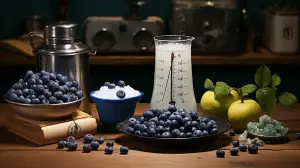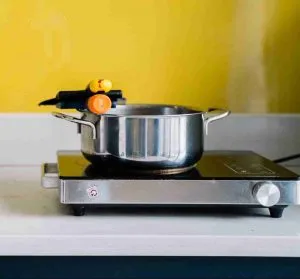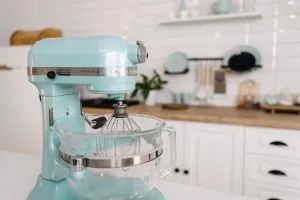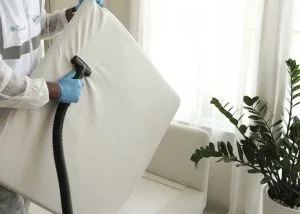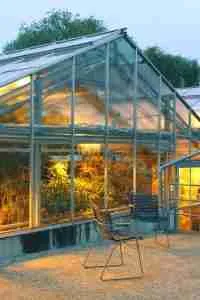Contents
ToggleTYPES OF PANS

When it comes to pans that can be used in the oven, there are several types to choose from, including:
Cast iron: Cast iron pans are durable, versatile, and perfect for high-heat cooking. They are also known for their ability to retain heat well, making them ideal for searing, sautéing, and roasting. Cast iron pans need to be seasoned before use to create a non-stick surface, and they are also prone to rust if not properly maintained.
Stainless steel: Stainless steel pans are durable, easy to clean, and oven-safe. They are also resistant to rust, but they have a tendency to heat unevenly, making them less ideal for high-heat cooking.
Aluminum: Aluminum pans are lightweight, affordable, and oven-safe. However, they have a lower heat resistance compared to other materials, so they may not be the best choice for high-heat cooking.
Glass: Glass pans are great for baking and are oven-safe. They are also non-reactive, which means that they won’t affect the taste or appearance of your food. However, they are prone to breaking if subjected to sudden temperature changes or if dropped.
Enameled cast iron: Enameled cast iron pans are made of cast iron coated in a layer of enamel, making them non-reactive and resistant to rust. They are great for baking and roasting, and they also retain heat well.
Each type of pan has its own unique advantages and disadvantages, so it’s important to choose the right one for your specific needs.
Material Compatibility
Not all materials are safe to use in the oven, so it’s important to make sure that the pans you’re using are oven-safe. Check the manufacturer’s instructions or look for “oven-safe” labels on the product.
Heat Resistance
Different types of pans have different heat resistance levels, so it’s essential to ensure that the pan can handle the heat of the oven you’re using. Cast iron, for example, can withstand high temperatures, making it a great choice for searing and roasting. On the other hand, aluminum and stainless steel have lower heat resistance and may not be the best choice for high-heat cooking.
Proper Usage
Some pans may be safe to use in the oven, but only under certain conditions. For example, some glass pans may only be safe up to a certain temperature. Always check the manufacturer’s instructions for guidance on proper usage.
Tips for Success
When using pans in the oven, it’s important to follow a few key tips for success:
Preheat the pan: This will help ensure even cooking and prevent food from sticking.
Use a baking sheet for extra stability: This will help prevent the pan from warping in the oven.
Avoid extreme temperature changes: Going from a cold oven to a hot oven, or vice versa, can cause some pans to crack or break.
How do I know if my pan is oven safe?

To determine if your pan is oven safe, you can start by checking the manufacturer’s instructions or looking for “oven-safe” labels on the product. If there is no information available, you can perform a simple test by placing the pan in a cold oven and gradually increasing the temperature to the highest temperature recommended by the manufacturer. If the pan does not warp or emit any harmful fumes, it is safe to use in the oven.
If you are not sure about the heat resistance of your pan, you can also try the “knock test.” To perform the knock test, tap the bottom of your pan with a metal utensil. If you hear a dull sound, the pan is likely not oven safe. If you hear a ringing sound, the pan is likely oven safe.
Can Tefal pans go in the oven?
Tefal is a popular brand of cookware known for its non-stick properties and ease of use. Many of those pans are designed for stovetop cooking, but can they also be used in the oven? The answer is yes, some Tefal pans are oven safe.
This brand offers a range of pans that are suitable for use in the oven, including its lines of hard-anodized aluminum and stainless steel cookware. These pans are typically labeled as “oven safe” or “suitable for use in the oven.” The maximum temperature that the pan can withstand will also be listed on the product packaging or in the product specifications.
It’s important to note, however, that not all of those pans are suitable for use in the oven. Tefal’s non-stick pans, for example, are not recommended for use in the oven. The high heat of the oven can cause the non-stick coating to break down, reducing the pan’s effectiveness and potentially releasing harmful chemicals into your food. To determine if a Tefal pan is oven safe, simply check the product labeling or specifications.
What can I use instead of a baking pan in the oven?

Whether you’ve run out of pans or you’re looking for a healthier alternative, there are several options available that can be used in place of a traditional baking pan.
Foil: Aluminum foil is one of the most versatile items in your kitchen and can be used to create a makeshift baking pan. Simply shape the foil into the size and shape you need, place it on a baking sheet, and fill it with your batter or ingredients. This is a great option for recipes that don’t require a lot of structure, like baked goods.
Cast Iron Skillet: Cast iron skillets are oven safe and can be used for a variety of recipes, including cakes, bread, and even pizza. The cast iron material helps distribute heat evenly and can result in a crisp crust and tender center.
Muffin Tin: Muffin tins are typically made of metal or silicone and can be used to make mini cakes, bread, or other baked goods. They are perfect for portion control and make great individual servings.
Dutch Oven: Dutch ovens are large, heavy-duty pots that are ideal for roasting meat and vegetables or making stews and soups. They are oven safe and can also be used for baking bread, cakes, and other baked goods.
Baked Potato: This actually may seem quite funny or stupid but as the saying goes – ”what is stupid but works is not so stupid!”. If you’re looking for a single-serving option, try this makeshift baking dish. Simply cut a potato in half, scoop out the flesh, and fill it with your batter or ingredients. Bake in the oven until cooked through.
Can you put saucepans in the oven?
Saucepans are typically not designed for use in the oven, as they are made of materials that are not heat-resistant or oven-safe. If you need to transfer food from the stovetop to the oven, rather choose a pan specifically designed for oven use, such as a cast iron skillet or enameled cast iron Dutch oven.
Can aluminum pans go in the oven?
Pans made from this lightweight material are a popular choice for cooking and baking, but can they be used in the oven? The answer is yes, aluminum pans can be used in the oven, but there are a few factors to consider.
With Non-Stick Coatings: These are safe to use in the oven, but the temperature should not exceed the manufacturer’s recommended limit. It’s important to follow the manufacturer’s guidelines for use and to avoid overheating, as this can cause the non-stick coating to break down and release harmful chemicals into your food.
Without Non-Stick Coatings: Pans without non-stick coatings are also safe to use in the oven, but it’s important to take proper precautions. Avoid using acidic ingredients, such as tomatoes or lemon juice, as they can react with aluminum and affect the taste of your food.
Dark Aluminum Pans: Dark aluminum pans are designed to absorb and distribute heat evenly, making them ideal for baking. However, they can also cause food to brown faster, so it’s important to keep an eye on your food and adjust the cooking time as necessary.
What material can you not put in the oven?
Let’s take a closer look at what material should you avoid putting in the oven:
Plastic: Plastic should never be put in the oven, as it can melt and release toxic fumes. This includes plastic containers, wraps, and even utensils.
Paper: Paper can ignite in the oven, so it’s best to avoid putting it in there. If you need to line your baking pan, use parchment paper instead.
Glass with Gold or Silver Trim: Glass with gold or silver trim can become damaged in the oven and should not be used. This includes glass mixing bowls and casserole dishes.
Certain Types of Ceramics: Ceramics can be oven safe, but not all ceramics are created equal. Some of them are decorated with paint or glaze that can be damaged by high heat. Always check the manufacturer’s guidelines for use before putting such a dish in the oven.
Wicker or Bamboo: Wicker and bamboo baskets can ignite in the oven, so they should be avoided. If you need to steam food in the oven, use a metal steamer basket instead.
CONCLUSION
In conclusion, it’s important to understand which pans are safe to use in the oven and which ones are not. With the right knowledge, you can make the most of your kitchen equipment and achieve delicious results every time you cook.
When it comes to oven safety, it’s important to remember that not all pans are created equal. Some materials, such as plastic and paper, simply aren’t cut out for high-heat cooking. Other materials, like aluminum, can be used in the oven, but with certain limitations.
It’s also worth noting that not all pans are suitable for roasting. If you’re looking to make a perfect roasted chicken or a succulent pork roast, make sure you have a pan with high sides to contain the juices and drippings, and that it’s made of a material that can handle high temperatures.
So, whether you’re a seasoned cook or just starting out in the kitchen, make sure you have the right pans for your needs. With oven-safe pans at your fingertips, you can cook up a storm and impress your friends and family with your culinary skills. Happy cooking!








